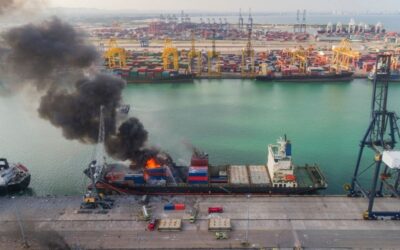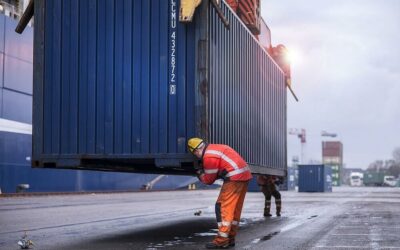What is Truckload Freight | An Ultimate Guide
Table of Contents
Truckload freight
Freight shipping refers to the movement of products and goods from one point to another via land, air, or ocean. It is an important element in businesses dealing in supply chain operations worldwide. Truckload freight is transported through roads and is loaded on trucks. The load is either assembled with other goods or dispensed to a dedicated container. This really depends upon the size, weight, and time required to ship it.
Benefits
The benefits of this shipping method include:
Cost-effective
To move big loads like furniture or industrial equipment, ground freight is considered to be the most cost-effective method for short distances.
Sustainable Solution
Trucks leave a lower carbon footprint compared to airplanes and ships.
Greater Availability
Trucks usually operate all day long. Generally, the ground freight services are available 24/7. So, the availability factor plays a significant role in making truckload a preferred choice.
Cons:
But there are some cons that include
- Weight and volume limits
- Delay due to hurdles in traffic
- Damage to products due to mishandling or because of too harsh weather conditions
- Distance limit
Extra Services
The customers can also opt for additional services to make the loading and unloading easier. They can do so by paying extra charges and get the services that may include lift gates, inside pickup and deliveries, etc. The trailers are of various sorts too; refrigerated, air-rides, etc. to transport products with conditions.
How is it measured?
Freight is measured in terms of the number of pallets used or its weight rather than its dimensions.
Cost measurement
Cargo that is conveyed by truck is commonly estimated based on the space it occupies inside a trailer, which normally has
- 8 to 8.5 ft in width
- 12.5 to 13.5 ft height
- 40 to 53 ft length.
Things to Consider
There are different types of truckload freight services. The companies that provide truckload freight shipping services can opt for one to move a shipment. Every service has its own advantages and disadvantages. That is why it is important for both customers and suppliers to be well aware of these types to transport the products safely and at a reasonable cost.
It is up to them to choose the method of shipment that is most suitable. The choice of the customer might be influenced by the following elements
- The products you are shipping
- Budget
- Shipment’s size
- Shipment’s weight
- Time
- The place you are shipping to
- Speed of transportation
Now let’s discuss the types of truckload freights.
Less-Than-Truckload
LTL shipping method is for the cargo that is too large to be sent into parcels and too small to be placed in a full container. This shipping method is less cost-effective as compared to FTL as the carrier too, has to move along with the vehicle. But if the shipment is being transported in the same truck the cost can be reduced. It is used if
- The cargo doesn’t take the space of a whole container
- isn’t large enough to fit into a 48- or 53-foot trailer,
- the weight of the shipment is between 150 to 10000 pounds
- The cargo uses between one to five pallets
The freight is combined in one trailer with multiple shipments. Oftentimes for LTL shipments, the trucks are changed during the journey because the freight has to pass a number of terminals. The truck carriers consolidate several LTL shipments in a 53-inch trailer to send the cargo to local and regional distributors. Once the cargo reaches its destination, the products are then delivered locally.
Benefits:
This shipping method is cost-effective as different cargo are assembled together and charges are to be paid only for the space occupied by the cargo and for its weight. There are some other benefits that LTL shipping offers including
- gaining control over shipment visibility
- decreasing costs
- obtaining scheduling flexibility.
Charges of LTL:
For LTL shipping, the freight class method can help you determine the shipping cost in a better and quicker way. With having 18 different classes, lower classes have lower rates while higher classes have higher rates. There are four elements that determine the freight class of your shipment
- Density
- Risk on transporting the cargo
- Handling
- How easy or difficult it is to stow on board.
- liability
Partial Truckloads
These are also known as Volume LTL and offer an alternative form of LTL shipment suitable for a shipment that utilizes
- Six pallets or takes space of between 12 to 32 ft of trailer space
- Or weighs more than 5000 lbs.
Partial truckload (PTL) is in the middle of the LTL and FTL. It is not the same as LTL on the grounds that it doesn’t consider the cargo class of the shipment. Volume shipping cost is related to LTL shipments that fall outside the LTL truckload boundaries, yet not enormous enough to fall under full truckload boundaries.
Charges of the PTL
It is quite similar to LTL in a way that the bill is charged on the basis of the space occupied by the cargo and the shipment doesn’t take up the space of a full container. It is also like FTL as PTL shipments during the transit are sometimes moved to another truck.
But depending on the weight and volume, the cost for a volume LTL is different from LTL rates. Freight class often charges extra cost so partial truckload can help a customer save money.
Full-Truck-Load
As evident from the name FTL, a Full truckload (FTL) is for a shipment that takes the space of a whole trailer, regardless of whether there are sufficient pallets to place it. FTL is also used for the goods that need to be transported in a full trailer for secure and safe transit.
Cost and Benefits
The weight of the shipment varies from 10,000 to 45,000 lbs. These shipments are usually direct and there are very few to zero stopovers.
This shipping method can be highly cost-effective as the space in the container is being used to the maximum extent and this shipment doesn’t need to make many stops.
Flatbed Shipping:
Flatbed shipping is the mode of transportation used for shipping items that either
doesn’t fit the space of a dry van trailer
Or can’t be moved to or from a dock
Such shipments may include mechanical apparatus, industrial gear, solid beams, and so on. The flatbed trailer is normally
- 48 ft long
- 8.5 ft wide
It has various deck lengths for step decks, twofold drops, and removable goosenecks. The freight can be stacked from all points by a crane. The cargo is packed in chains or straps to keep it secure.
Expedited Shipments:
Expedited shipments are time-critical. This shipping method will come at a higher cost than normal. However, it additionally implies that you will have the option to get your shipment where it should be a lot quicker. The transportation cycle is streamlined to guarantee that your shipment gets to its destination as fast and easily as could reasonably be expected
Freight Pricing
On the basis of contract
Agreements give an ensured rate when the rates are commonly set up for a year. By far most of the transporters will, in general, do a yearly RFP in the fourth quarter to coordinate with the money related planning measures.
Spot
Unlike contract pricing, spot pricing is the value a cargo rate supplier offers for transporters at a particular point so as to move cargo. Rate is acquired on available conditions in which the cargo will be moved and the rate is mentioned. The dynamic idea of the spot rate can be determined by a TMS
Special Project
Special projects involve shipments with a volume outside of what might be considered “anticipated” amounts.
Other elements that influence cargo rates
Measurements
The length, width, and height of your shipment matters since transporters charge you for space it takes up in the trailer. Various items have distinctive volumetric loads, which can be higher regardless of the shipment not being heavy.
Chargeable Weight
The chargeable weight is the higher rate among the volumetric weight and the actual weight.
Worth
The insurance cost is determined by the value of the shipment itself. High-valued things additionally need insurance to compensate if there has been any damage or loss of product during transportation.
Delivery Speed
Depending on the nature of the products, some items need to be transported in a shorter period of time. For instance, perishable goods need to be hauled quicker than normal. For faster services, the cost to be paid gets higher too.
Custom Clearance
The custom clearance fee consists of import and export duties which are different for different countries.
Distance
The farther the shipment needs to go the more it will cost.
Minimum charges
The base or minimum charges to be paid are set by the carriers themselves.






